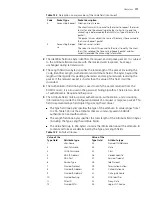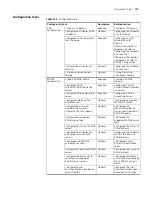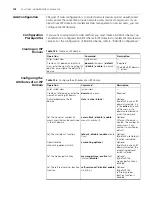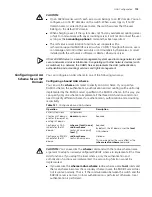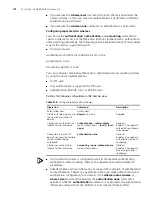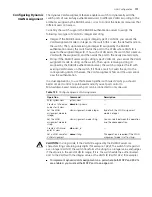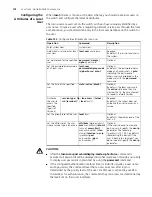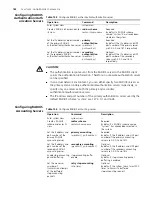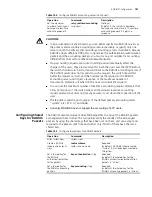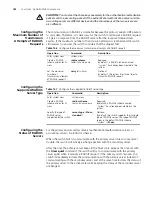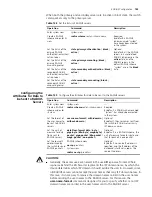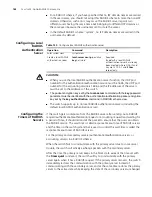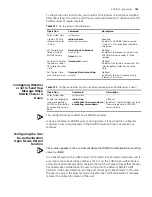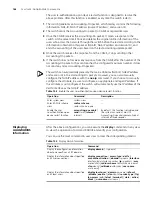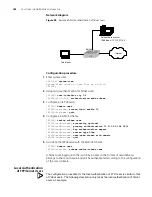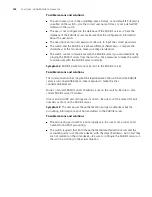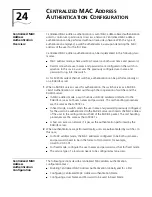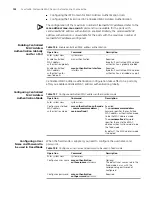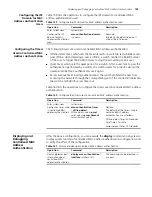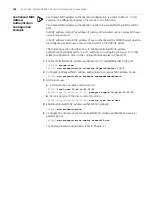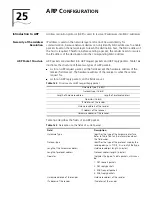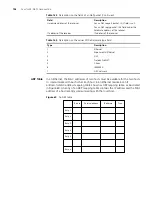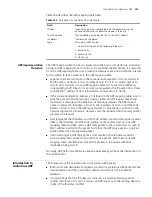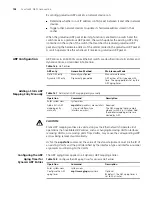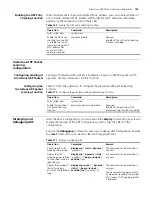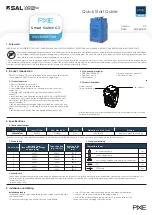
RADIUS Configuration
185
To charge the users in real time, you should set the interval of real-time accounting.
After the setting, the switch sends the accounting information of online users to the
RADIUS server at regular intervals.
Configuring Whether
or not to Send Trap
Message When
RADIUS Server is
Down
This configuration takes effect on all RADIUS schemes.
A device considers its RADIUS server as being down if it has tried the configured
maximum times to send packets to the RADIUS server but does not receive any
response.
Configuring the User
Re-Authentication
Upon Device Restart
Function
The function applies to the environment where the RADIUS authentication/accounting
server is CAMS.
In an environment with a CAMS server, if the switch reboots after an exclusive user (a
user whose concurrent online number is set to 1 on the CAMS) gets authenticated
and authorized and begins being charged, the switch will give a prompt that the user
has already been online when the user re-logs onto the network before CAMS
performs online user detection, and the user cannot get authenticated. In this case,
the user can access the network again only after the CAMS administrator manually
removes the online information of the user.
Table 151
Set the timers of RADIUS server
Operation
Command
Description
Enter system view
system-view
—
Create a RADIUS
scheme and enter
its view
radius scheme
radius-scheme-name
Required
By default, a RADIUS scheme named
“system” has already been created in
the system.
Set the response
timeout time of
RADIUS servers
timer response-timeout
seconds
, or
timer
second
Optional
By default, the response timeout timer
of RADIUS servers expires in three
seconds.
Set the wait time for
the primary server
to restore the active
state
timer quiet
minutes
Optional
By default, the primary server waits five
minutes before restoring the active
state.
Set the real-time
accounting interval
timer realtime-accounting
minutes
Optional
By default, the real-time accounting
interval is 12 minutes.
Table 152
Configure whether or not to send trap message when RADIUS server is down
Operation
Command
Description
Enter system view
system-view
—
Enable the sending of
trap message when
RADIUS authentication
or accounting server is
down
radius
trap
{
authentication-server-down
|
accounting-server-down
}
Optional
By default, the switch does not send
trap message when its RADIUS
server is down.
Summary of Contents for 4200G 12-Port
Page 10: ...8 CONTENTS...
Page 14: ...4 ABOUT THIS GUIDE...
Page 46: ...32 CHAPTER 5 LOGGING IN THROUGH WEB BASED NETWORK MANAGEMENT SYSTEM...
Page 48: ...34 CHAPTER 6 LOGGING IN THROUGH NMS...
Page 60: ...46 CHAPTER 9 VLAN CONFIGURATION...
Page 64: ...50 CHAPTER 10 MANAGEMENT VLAN CONFIGURATION...
Page 80: ...66 CHAPTER 13 GVRP CONFIGURATION...
Page 98: ...84 CHAPTER 15 LINK AGGREGATION CONFIGURATION...
Page 112: ...98 CHAPTER 18 MAC ADDRESS TABLE MANAGEMENT...
Page 126: ...112 CHAPTER 19 LOGGING IN THROUGH TELNET...
Page 162: ...148 CHAPTER 20 MSTP CONFIGURATION...
Page 274: ...260 CHAPTER 29 IGMP SNOOPING CONFIGURATION...
Page 276: ...262 CHAPTER 30 ROUTING PORT JOIN TO MULTICAST GROUP CONFIGURATION...
Page 298: ...284 CHAPTER 33 SNMP CONFIGURATION...
Page 304: ...290 CHAPTER 34 RMON CONFIGURATION...
Page 338: ...324 CHAPTER 36 SSH TERMINAL SERVICES...
Page 356: ...342 CHAPTER 38 FTP AND TFTP CONFIGURATION...
Page 365: ...Information Center Configuration Example 351 S4200G terminal logging...
Page 366: ...352 CHAPTER 39 INFORMATION CENTER...
Page 378: ...364 CHAPTER 40 BOOTROM AND HOST SOFTWARE LOADING...
Page 384: ...370 CHAPTER 41 Basic System Configuration and Debugging...
Page 388: ...374 CHAPTER 43 NETWORK CONNECTIVITY TEST...
Page 406: ...392 CHAPTER 45 CONFIGURATION OF NEWLY ADDED CLUSTER FUNCTIONS...

